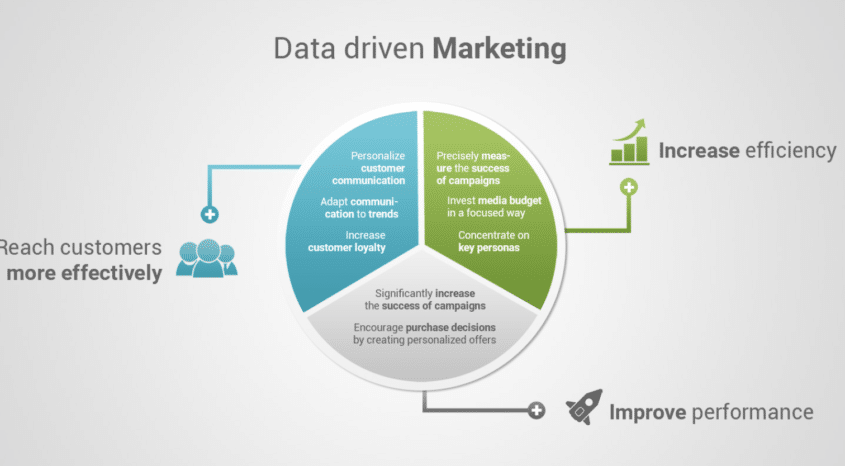Take a moment to sit back, close your eyes and remember your last excellent customer experience. Maybe you had a complaint about an order, and you were able to reach a customer support specialist who either immediately had a solution or rerouted you to someone who did. Or after you purchased an item, you received a follow-up email asking about your experience and if there were any ways the company could better serve you. Maybe you clicked into a storefront that seemingly guided you by magic to exactly what you were looking for…
Now think of a time when a company completely dropped the ball.
It is likely that a breakdown of internal collaboration and communication occurred. Many times, poor customer experiences can be traced to a lack of internal structures that ensure frictionless information sharing throughout the enterprise. Often, employees may not have the knowledge, the tools, or the autonomy to properly handle an inquiry or issue.
No matter the job description, collaboration across the enterprise is critical for employees in order to deliver excellent customer experiences.
Here are five ways a lack of organizational cooperation can destroy the customer experience, and some fixes to begin turning this problem around.
1. Lack of Information Sharing
How often do policy shifts or new transaction rules negatively impact customers? How many times do customers receive different or conflicting answers depending on whom they spoke with? These scenarios are almost always the result of inadequate information sharing.
When a decision made in the C suite does not make it to those who interact with customers, it will have a detrimental impact on the purchasing experience. Potential buyers won’t know what is correct and what isn’t, and this can contribute to a lack of trust on the part of the customer.
The Fix: Employing a robust system of organized information and status sharing in the form of a project management program or company-wide chat system can distribute mission-critical policies and status information throughout your organization more quickly.
2. Poor Help Desk Management Practices
Most of us can remember a time where we reached out to a company with a problem and either spoke to a chatbot or a help desk associate and, for some reason, the inquiry never made it to the correct person. To add insult to injury, there is no record of the original complaint.
The Fix: A collaborative help desk software solution can help those who work with customers track complaints, reroute them to the right person, and even monitor how long a problem ticket has been in the queue. A strong help desk system can keep everyone on the same page and ensure customers are not waiting a long time to receive answers.
3. Every Department Works in Silos
One of the worst things a company can do is not map out how its functional departments relate to one another. Lack of organizational clarity makes everyone unhappy.
For example, if a customer purchases an item from the store, and there was a breakdown in receiving payment, or if the purchase was never registered, that not only impacts the finance department, but it also adversely affects shipping, customer service, and even logistics.
The Fix: Functional departments must work together to understand where inefficiencies and gaps in processes are occurring, then begin to eliminate siloing by closing those gaps. Ideally, departments can function as checks and balances for one another to ensure customers are receiving an excellent experience. Ultimately, each department then plays a role in improving the overall customer support process.
4. Understanding Tasks That Actually Require Collaboration
Collaboration requires intentionality and strategy. However, there is such a thing as too much collaboration, where decisions are never reached because everyone has to have a hand in the decision-making.
To deliver a well-thought-out customer experience, leaders have to understand which customer-facing activities require collaboration, and which do not.
Which departments are involved in answering customer questions and providing support? Who is responsible for ensuring ordered items make it to a customer? Who plays a part in the brand messaging displayed on social media?
The Fix: Collaboration-critical areas typically include functions where workers have multiple interactions with customers. Once leaders take the time to understand who should be involved in all these customer-related touch points — and who shouldn’t be — then they can begin to set up systems where only the necessary departments collaborate when required.
5. Poor Communication Systems and Practices
When a high-value customer reaches out to your company by email, does the inquiry result in endless forwards and no action? Did a customer service call that came after hours ever make it to the correct rep? Poor communication systems are one of the main reasons customers never receive the answers they are looking for. And customers who can’t find answers don’t remain customers for very long.
The Fix: To empower company teams to stay on the same page and communicate with the right people at the right times, instituting a streamlined communications system empowers workers to trade needed information with one another in real time. This shift allows for a straightforward record of conversations that everyone can access. However, a switch in technology should always be accompanied by a strategic plan of how teams should use these tools, along with onboarding to ensure that everyone knows how to get the best use possible out of the tools at hand. It is also important to remember that there are ethical issues in business communication such as using VoIP for spam calls and deceiving people by using a fake ID and location
Final Thoughts
Just like delivery failures and products that never successfully launch, at the heart of most poor customer experiences is an internal breakdown of collaboration and communication.
Typically, this breakdown is the result of inadequate or poorly implemented communications tools and processes. If departmental leadership across the company can sit down with their teams and understand the challenges facing that team, they can begin to see where their work intersects.
With this insight, they can begin to create streamlined processes that ultimately lead to better customer experiences.




